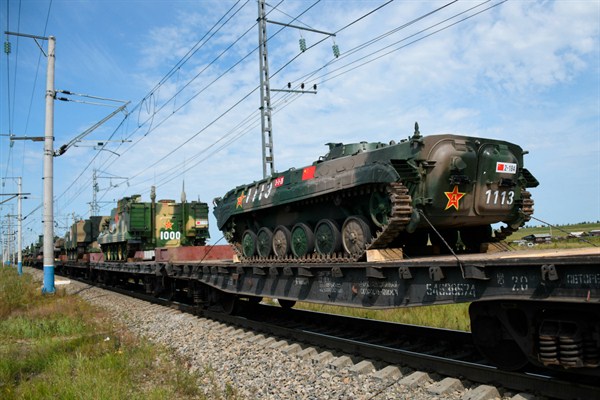In the largest Russian military exercise since the height of the Cold War, Moscow this week is deploying 300,000 troops, 900 tanks and 1,000 aircraft in central and eastern Russia. The military demonstration, called “Vostok 2018,” or East Exercise 2018, is expected to last from Sept. 11 to 15. This year, for the first time ever, Chinese military forces will participate, sending 3,200 troops and 30 aircraft over the border into eastern Russia. Similar Cold War-era drills only included states that were part of the Soviet sphere.
The Vostok exercise highlights two important, seemingly contradictory things about the relationship between China and Russia. First, the appearance of military cooperation masks deep strategic distrust and suspicion below the surface. But second, despite these real limitations, strong incentives and a lack of alternatives provide a sturdy foundation for a continued strategic partnership going forward.
Vostok 2018 represents the latest in a series of combined Chinese-Russian military exercises stretching back more than a decade. Their militaries have been training together since 2005, and China and Russia have been holding joint naval exercises every year since 2012, including near each other’s respective hotspots. Last year, China sent three naval ships to its first jointly held exercise with Russian forces in the Baltic Sea. In 2016, the two navies carried out a joint exercise in the South China Sea, which many read as a response, in part, to a ruling by the Permanent Court of Arbitration in The Hague rejecting China’s territorial claims in the contested waterway.

